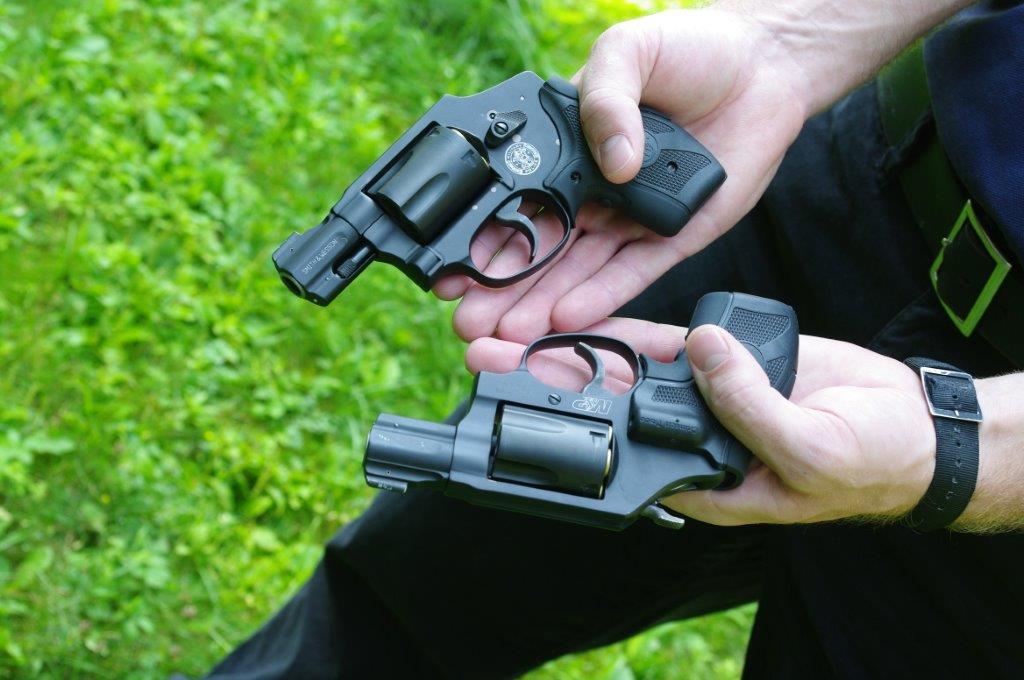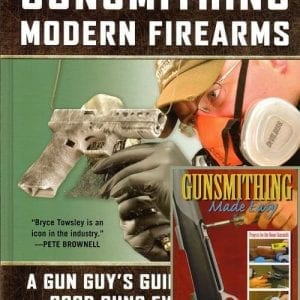What’s the definition of an optimist?
“A guy carrying a J-Frame and a speed strip.”
The plate rack is a staple of any 3-gun or USPSA shooting match and it’s also one of the greatest training tools on earth. By varying the size of the plates and/or the distance, the shooter can create a huge range of scenarios.
Run it fast with your race gun from 15 yards and you feel super human. Hit all six at 500 yards with your .308 Precision rifle and your ego will need a Valium. Or smoke them down in a couple of seconds with your shotgun and hear the crowd cheer. The instant gratification of shooting steel is far superior to punching paper. You know in an instant if you hit or missed and it never gets boring.
If, like me, you don’t own a large personal range where you can leave your steel set up without risk of molestation by vandals with rifles, the downside of a plate rack emerges. They are big and heavy and a bit much for one guy to load into a truck. That is, unless you have one from Mike Gibson Manufacturing (MGM.) They offer a plate rack on a trailer that you simply unhook from your truck and shoot at. I am lucky enough to have one that lives in my small backyard range when it’s not traveling to visit other scenic shooting spots in the area.
Since it arrived I am trying to get a little range time every day to work on my handgun skills. Today was J-Frame day.
Here is a little honesty. As a gun writer I am always experimenting. As a result, I carry a lot of different handguns in a lot of different holsters. But right now it’s hot and humid and it’s hard to hide a 1911 under a sweat soaked T-shirt. So I find that more often than not I have my S&W M&P Model 340 CT J-Frame revolver in a pocket holster. This is a slick little gun that comes fitted with a CT Lasergrip. I had Ken Kelly Mag-na-Port for a bit more control. I carry it in the front pocket of anything I am wearing, dress pants, blue jeans or even baggy summer shorts.
The problem is, when I practice shooting I tend to gravitate to my competition guns, a 1911 or whatever handgun I am currently working on writing about. I rarely use the J-Frame. That’s stupid on my part. If I am carrying it I should be shooting it. So today that’s what I did.
Here are a few lessons that emerged from that session.
No Matter How Hard You Try, You Can’t Clean a Plate Rack Without a Reload.
The rack is six targets, the gun holds five shots. After shooting with semi-autos and 1911s, it’s a shock how fast this little revolver runs dry. It’s always a surprise when the hammer falls and nothing goes bang. Something to remember if you are defending your life with a J-Frame.
When it Comes to Reloads, Your Results may Vary
Speed strips are a nice convenient way to carry spare ammo. They fit flat in a pocket and are unobtrusive. But, when it comes time to recharge the gun, they kinda suck. Sure, it’s better than just a pocket full of cartridges, but “fast” they ain’t.
Speed loaders are still the fastest way to recharge a revolver. But they are a pain to carry. They are bulky in a pocket and obvious in a belt pouch.
So which one is best? Hell, I don’t know. There is simply no way to load a revolver as fast as a magazine gun. Revolvers have their good points, but capacity and fast reloads are not on that check list. (What is? A 100% reliable gun that weighs less than a pound, fits in my pocket and has the power of a .357 Magnum makes for a pretty good plus side argument.) I carry both loading tools and I practice with one or the other with every reload on the range. That way I am at least proficient in their use.
Inches Matter
Sights are always important. But when your sight radius is only 3.2 inches they matter a lot. Focus, focus, focus and watch that front sight. Your sloppy, speed techniques with your 5-inch guns will not work with a J-Frame.
A Chicken in Every Pot and a Laser On Every Carry Gun
Makes a catchy campaign slogan, don’t you think?
The more I use lasers the better I like them. If the light allows it, I work with my laser sights every time I practice with a carry gun. On a little gun like the J-Frame, or a polymer pocket pistol, a laser is the great equalizer. Unlike sights, lasers are socialists, they are exactly the same on every handgun. They work the same on a little gun as they do on a full size handgun. Of course, grip size and trigger quality are a factor, but as far as aiming the guns, the laser is an equal opportunity pistol sight.
My time to run the plate rack using the J-Frame is much faster with the laser sight than with the big dot of the XS 24/7 Tritium Night Front Sight on the gun. With a polymer .380 it’s not even close to a contest. I am also able to shoot 40 yards off my back porch and hit the plates in the fading light of evening. That’s not so easy with the sights. But it’s not a magic light beam to guide the bullet. You still have to practice. The laser is a tool, not a crutch: so train with it, then turn it off and train without it.
Train Smart
I am just working on the fundamentals here, so I use .38 Special loads. I put more than 100 rounds on the plate rack in less than an hour and still felt good.
I like to run a few of my carry loads through any gun after a training session. That way I can make sure they function in the gun. That’s not as much of an issue with a revolver as it is with a semi-auto. It’s critical in the polymer pocket pistols mentioned earlier. Most of mine are pretty fussy about ammo and often demand I feed them a specific load. Another reason is to make sure I am familiar with how the full power ammo feels in my gun. That’s critical with the J-Frame, as anybody used to shooting .38 Special ammo is going to be shocked when a full power .357 Magnum goes off. I finished the session shooting plates from 20 yards with full power .357 Magnum loads and in this 13.3 ounce handgun, five shots was just about enough.
For the record, I hit four plates. That pesky “focus on the sights” thing made me miss the last shot.










